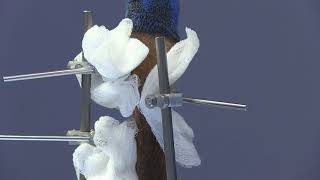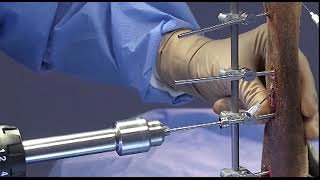Duraface Fixation Half-Pin, Short, No-Point
First Major Improvement in ESF Pin Technology
IMEX Duraface half-pins demonstrate a 55% average increase in stiffness and a 3.7 fold increase in cyclic fatigue life compared to current positive-profile pins without an increase in cost. These mechanical improvements can...
Read moreFAQs
-
Will I need to purchase different drill bits to properly pre-drill for Duraface half-pins?
-
If Duraface pins are mechanically superior to positive-profile Interface pins and use the same drill bits and sleeves while not costing more, is there any reason I should continue using positive-profile half-pins?
-
Will Duraface half-pins function in any brand of ESF clamp?
-
Is there a sequence and technique for placement of subsequent pins?
-
Do you still have questions?
LEARN
Using and Storing CrossCut Wedge Osteotomy Guides
Correction of angular limb deformities in small animal patients can be challenging and begins with detailed planning of the correction which often involves a closing wedge ostectomy.
Read moreStabilization of Coxofemoral Luxation Using the Toggle Pin Method
There are a number of popular surgical methods for maintaining reduction of coxofemoral luxations - use of the toggle pin method, ilio-femoral sutures to limit external rotation of the hip,...
Read more












